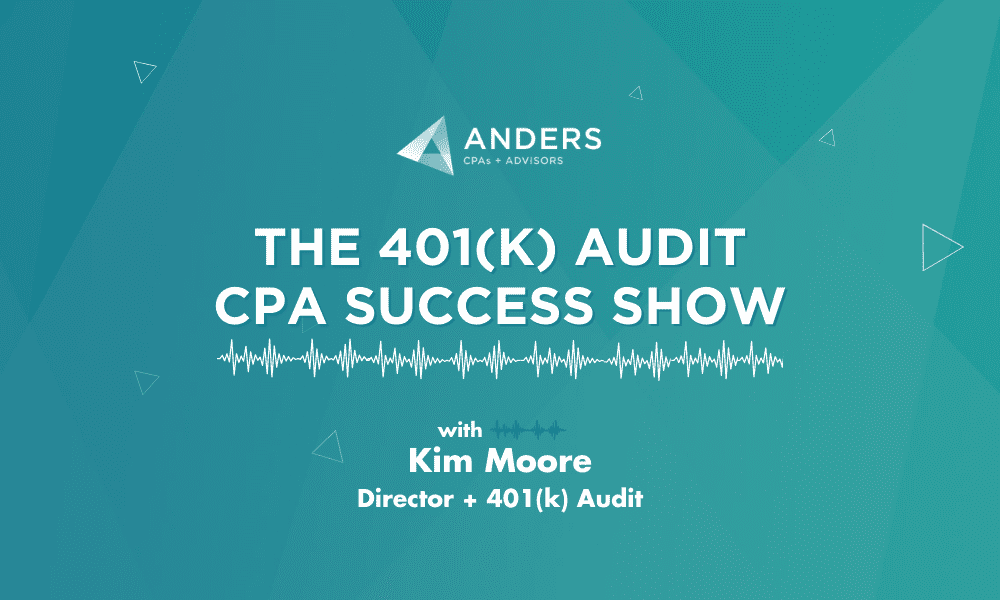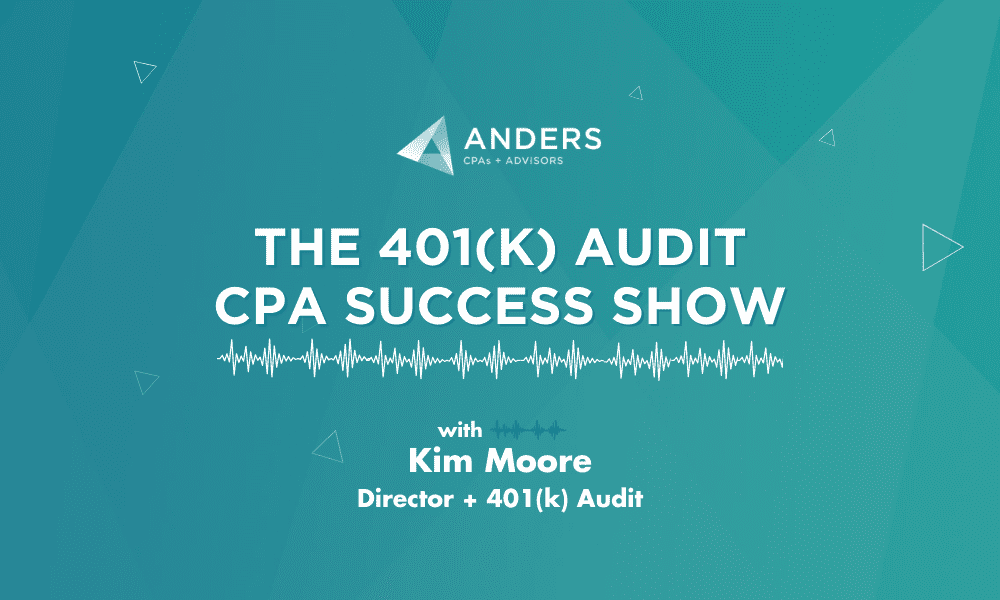Each year, with few exceptions, any business that sponsors an employee retirement savings plan, or a 401(k) plan or its equivalent, must file a Form 5500 for each year that the plan holds assets. Understanding what the form is, what it requires and other key facts is essential for plan sponsors and administrators to file it correctly and on time, thereby avoiding costly fees and penalties that can accrue.
In the latest episode of the 401(k) Audit CPA Success Show podcast, Director and 401(k) Audit Practice Leader Kim Moore and Audit and Assurance Manager Karen Hill explained the importance of Form 5500, shared tips on how to avoid costly mistakes and discussed the different schedules to educate plan administrators and sponsors on the differences.
Key Takeaways:
- Form 5500 provides the IRS, the Department of Labor (DOL) and plan participants with accurate information about the plan, including what type of plan it is and what kind of investments are in the plan
- Including inaccurate information can result in fines, so it’s strongly suggested that plan sponsors or administrators carefully review the Form 5500, even if it was prepared by a third-party provider
- Information filed on a Form 5500 is publicly available, make sure not to include confidential or proprietary information
- The due date for filing Form 5500 is seven months after the plan year-end, which falls on July 31st for plans with a calendar year-end
- There is one extension available that allows for timely filing an additional 2 ½ months after the original due date (October 15th for calendar year plans)
- Once the deadline has passed, you will not be able to request an extension and must instead face late charges due to the past due filing
- Form 5500 must be filed electronically through the EFAST System, although many service providers have their own system or portal where the form can be submitted for filing through to EFAST.
What is Form 5500?
At its most basic, Form 5500, available through the IRS website, is a tax form and its purpose is to provide the Department of Labor (DOL), the Internal Revenue Service (IRS) and plan participants with information about a 401(k) plan. This information will include the type of plan and the types of investments held within the plan. Other details to include are:
- The plan’s start date
- The number of participants
- Details about the plan sponsor
Other details that may need to be documented on the form include the accountant opinion if the plan has met the threshold to qualify for an audit, schedules concerning assets and liabilities and insurance contract details if they are applicable. Information provided on the form will be publicly available, ensure that you are not divulging confidential or proprietary information that can be found through a simple internet search. The IRS will also review the document to ensure personal information hasn’t been included.
Form 5500 largely resembles other federal tax forms and, like those forms, must be filled in with accurate information. Any changes that took place between the previous plan year and the current one, such as switching to a different plan or changing your EIN number, should be noted on the form. If inaccurate information is mistakenly included in the form, it can be refiled but if your organization utilizes a third-party service provider, there may be additional charges.
You will also want to double-check the work performed by any service provider. For instance, if your company filed a short form 5500 the year prior and is using a long-form this year, discuss this change with your provider to ensure it’s correct. Always request a copy of your Form 5500 from your service provider for your records if you don’t already do so. Creating a document retention plan at this time may assist you in upcoming years, particularly if your organization later qualifies for a 401(k) plan audit.
It’s especially important to make sure the participant counts are accurate as they can trigger a 401(k) plan audit before your organization really needs one, creating additional, unnecessary costs. Catch inaccuracies before the form is officially filed to save your company time and money. Deadlines are strict when it comes to filing Form 5500, so making a timely review is critical.
When is Form 5500 Due?
While other tax deadlines fall on April 15 or, when extended, to October 15, deadlines for the Form 5500 follows a different schedule. It is due seven months after the plan year-end. If your plan adheres to a calendar year-end, that date will be July 31. An extension can be filed to push the deadline back to October 15, but the extension must be filed before the deadline has passed otherwise the filing will be considered late and will be subjected to penalties and fines.
Form 5500 must be filed electronically, it’s not possible to print the form and mail it in. Instead, it must be filed through the EFAST System. If you work with a service provider, many provide a portal or other system to submit the information through. When in doubt, reach out to your service provider to ask what your options are.
If you need an audit for your 401(k) plan, consider a specialized firm like Anders CPAs + Advisors. We can provide a quality benefit plan audit that is efficient and accurate.
To get started, request a free 401(k) audit consultation below or contact the team at (314)-886-7913 to schedule an appointment.
Watch the 401(k) Audit CPA Success Show: What Is Form 5500 And When Is It Due? on YouTube and subscribe on Spotify or Apple Podcasts and let us know what you think by rating and reviewing.


